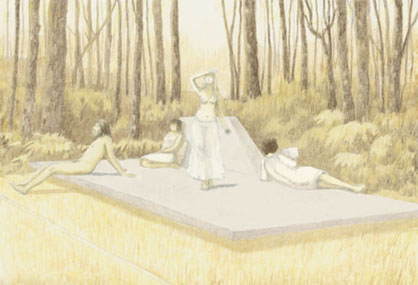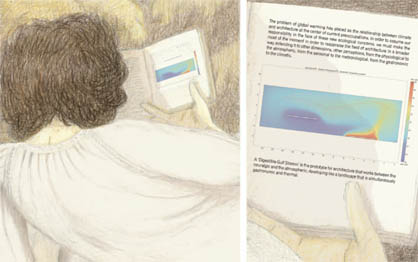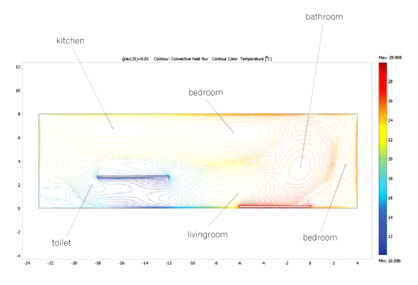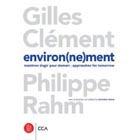|
|
||||
| home > architetture | ||||
| PHILIPPE RAHM ARCHITECTES. Digestible gulf stream |
||||
| Nell'ambito dell'11. Mostra di architettura della Biennale di Venezia, Philippe Rahm presenterà, accompagnato da una performance musicale site specific di Syd Matters, il progetto Digestible gulf stream. Si tratta di un'installazione di grande scala, un "manifesto di architettura metereologica", una "generazione termodinamica di spazio", come l'architetto svizzero lo ha descritto. La ricerca di Philippe Rahm si esprime, ancora una volta, attraverso il suggerimento di potenziali condizioni spaziali, di situazioni sottilmente immaginate, senza alcuna funzione aggiunta. ARCH'IT offre un'anticipazione del progetto che Philippe Rahm ha scelto di far vivere anche attraverso un fumetto realizzato dal giovane illustratore Piero Macola. [MB] |
||||
    ARCHITECTURE AS METEOROLOGY. Architecture should no longer builds spaces, but rather create temperatures and atmospheres. Here, two horizontal metal planes are extended at different heights. The lower plane is heated to 28°C, the upper one is cooled to 12°C. Like a miniature Gulf Stream, their position creates a movement of air using the natural phenomenon of convection, in which rising hot air cools on contact with the upper cool sheet and, falling, is then reheated on contact with the hot sheet, thus creating a constant thermal flow, akin to an invisible landscape. What interests us here is not the creation of homogeneous, established spaces, but of a plastic, climatic dynamic, the activation of forces and polarities that generate a landscape of heat. In this case the architecture is literally structured on a current of air, opening up a fluid, airy, atmospheric space. This architecture is based on the construction of meteorology. The inhabitant may move around in this invisible landscape between 12°C and 28°C, temperatures at the two extremities of the concept of comfort, and freely choose a climate according to his or her activity, clothing, dietary, sporting or social wishes. |
[25 agosto 2008] | |||
  The concept of thermal comfort depends not only on external temperature, but also on clothing, the physical activity of those who live in the space and their diet. For example, when we feel too hot, we have five ways of cooling down, which act on different scales: 1. reducing the air temperature in the room, for example by air conditioning (atmospheric solution); 2. drinking (physiological solution); 3. taking off clothes (social solution); 4. resting (physical solution); 5. stimulating a sense of coolness with the mind (neurological solution). Each one of these solutions is architecture. Architecture is a thermodynamic mediation between the macroscopic and the microscopic, between the body and space, between the visible and the invisible, between meteorological and physiological functions. |
||||
| ARCHITECTURE AS GASTRONOMY. We then propose to add two culinary preparations to the two plates that directly stimulate the sensory receptors of hot and cold at the cerebral level and that can be eaten or applied to the body. The first preparation, on the upper cold plate, contains mint, which has molecules of crystalline origin known as menthol that cause the same sensation in the brain as the coolness perceptible at a temperature of 15°C. The menthol activates the TRPM8 (transient receptor potential) molecular sensory receptors on the skin and in the mouth that stimulate the group of peripheral sensorial neurons known as cold-sensitive units. The second composition, on the lower hot plate, contains chilli, in which one of the molecules, capsaicin, activates the neuro-receptor TRPV1, which is sensitive to temperatures over 44°C. |
||||
   The traditional field of architecture thus expands, operating on both the atmospheric and gastronomic scales, breaking down the barriers between internal and external, body and space, neurology and physiology. The sensations of hot and cold may be perceived as much inside the body (diet) as outside (atmosphere). So the question of diet also comes into the field of architecture, on a par with its climatic dimension. Our architecture extends between the microscopic and the macroscopic, the gastronomic and the atmospheric, the visible and the invisible. Architecture becomes a Gulf Stream that polarises the contrasts on different scales (hot/cold, low/high, clothed/unclothed, internal/external, rest/activity) to give rise to architecture as a convective movement of air, creating a place like geography, designing space like climate, atmosphere and gastronomy. Philippe Rahm architectes |
||||
| PHILIPPE RAHM ARCHITECTES. Digestible gulf stream |
||||
| Digestible Gulf Stream è una installazione realizzata per la 11. Mostra internazionale di architettura della Biennale di Venezia, curata da Aaron Betsky. progetto: Philippe Rahm architectes collaboratori: fumetto: Piero Macola abiti: Isabel Marant musiche: Syd Matters modellizzazione climatica: Comsol |
||||
| ARCH'IT
books consiglia: Gilles Clement, Philippe Rahm, Giovanna Borasi "Environ(ne)ment: Approaches for Tomorrow" Skira, 2007 pp. 160, acquista il libro online! |
||||||
| Per
candidare progetti laboratorio
|
|||||
